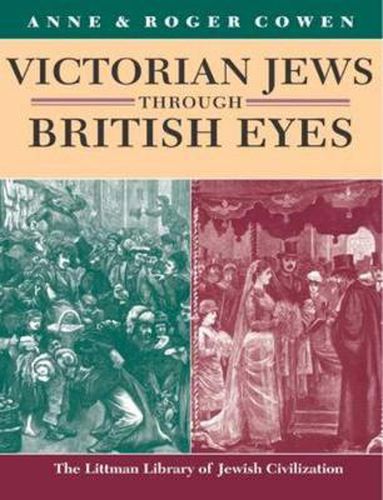Readings Newsletter
Become a Readings Member to make your shopping experience even easier.
Sign in or sign up for free!
You’re not far away from qualifying for FREE standard shipping within Australia
You’ve qualified for FREE standard shipping within Australia
The cart is loading…






When Queen Victoria came to the throne in 1837, Britain was home to only 30,000 Jews and they did not yet have full political rights. By the end of the century their numbers had increased about sevenfold, and practising Jews had taken their places in both the House of Commons and the House of Lords. Victoria’s reign therefore saw a tremendous change in the profile of Jews within British society.
The Victorian period was also one of economic transition for British Jews. While initially in a narrow range of predominantly working-class or marginal occupations with only a small upper-class elite, Jews became increasingly middle-class during these years; they began to enter the professions, and to move from inner London to fashionable suburbs. Increasingly, Britain’s Jews were British-born and of British descent, and proclaimed their loyalty to British ideals. From 1881 on, however, the position changed dramatically: a mass of Jewish immigrants arriving from Russia, made conspicuous by their foreign dress, appearance, language, and habits, prompted the emergence of an ‘Aliens Question’ into the British political arena. The image of Jews changed yet again.
All these developments were picked up in the illustrated magazines of the time: the object of a magazine is to interest its readers, and the unfamiliar may be more compelling reading than the commonplace. To illustrate the social history of the Jews in Victorian Britain, the authors therefore combed the Illustrated London News, Punch, and The Graphic and selected nearly 150 illustrations, with commentary, to show how the British image of the Jew developed in this period. The topics considered include early Victorian attitudes to Jews; the leading Jewish families and other prominent Jews; the Jewish way of life; immigrant Jews; Jewish life abroad; and the Jew in art.
$9.00 standard shipping within Australia
FREE standard shipping within Australia for orders over $100.00
Express & International shipping calculated at checkout
When Queen Victoria came to the throne in 1837, Britain was home to only 30,000 Jews and they did not yet have full political rights. By the end of the century their numbers had increased about sevenfold, and practising Jews had taken their places in both the House of Commons and the House of Lords. Victoria’s reign therefore saw a tremendous change in the profile of Jews within British society.
The Victorian period was also one of economic transition for British Jews. While initially in a narrow range of predominantly working-class or marginal occupations with only a small upper-class elite, Jews became increasingly middle-class during these years; they began to enter the professions, and to move from inner London to fashionable suburbs. Increasingly, Britain’s Jews were British-born and of British descent, and proclaimed their loyalty to British ideals. From 1881 on, however, the position changed dramatically: a mass of Jewish immigrants arriving from Russia, made conspicuous by their foreign dress, appearance, language, and habits, prompted the emergence of an ‘Aliens Question’ into the British political arena. The image of Jews changed yet again.
All these developments were picked up in the illustrated magazines of the time: the object of a magazine is to interest its readers, and the unfamiliar may be more compelling reading than the commonplace. To illustrate the social history of the Jews in Victorian Britain, the authors therefore combed the Illustrated London News, Punch, and The Graphic and selected nearly 150 illustrations, with commentary, to show how the British image of the Jew developed in this period. The topics considered include early Victorian attitudes to Jews; the leading Jewish families and other prominent Jews; the Jewish way of life; immigrant Jews; Jewish life abroad; and the Jew in art.